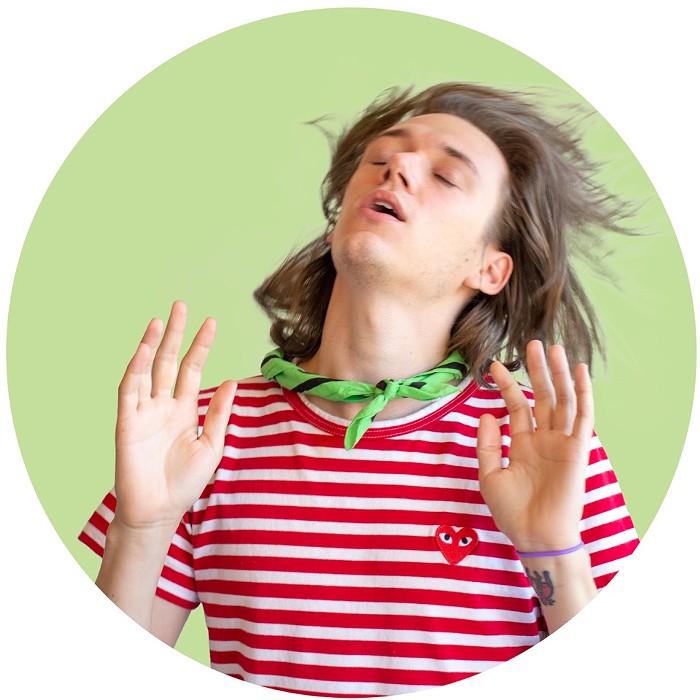
Cryptids and their lovers should really send Dash Shaw and Jane Samborski a fruit basket.
The husband and wife duo's expressionistic animated feature film Cryptozoo is an affectionate tribute to Earth's most mysterious beasts. Set in the 1960s in the United States, Cryptozoo follows cryptologists as they create a romantic zoo for cryptids. It's a space for all the fanged oddities to roam free—and also be gawked at, for a fee. The zoo has guided tours and a tanuki-themed lounge. It's a little like Zoo Tycoon but with harpies. As you can imagine of a zoo with kraken where seals should be, things do not go off without a hitch.
Shaw's first and previous animated feature, My Entire High School Sinking Into the Sea (2016), was a freewheeling and ecstatic debut about a shitty high school plunging into the sea after a tiny earthquake. It was tender and brutal, and if you're a fan of Seattle publisher Fantagraphics, which publishes Shaw, you'll be familiar with its style. Samborski animated High School Sinking, and Cryptozoo, the pair's sophomore feature, has Shaw writing and directing and Samborski as its animation director. Here, their loving collaboration extends to bigfoot and devil birds and grootslang.
For the non-believers and uninitiated, a cryptid is an animal claimed to exist but without sufficient evidence. These creatures go back forever. Werewolves are cryptids. The Japanese tengu is a cryptid. The platypus was once a cryptid, but now that little freak is a regular animal. People who study cryptids—cryptologists—have many theories on what is and isn't a cryptid. With Cryptozoo, they now have a radiant 95-minute feature film to admire and dissect.
"Drawing is our only way of seeing imaginary, mythological creatures. Drawing is a direct circuit to imagination," Shaw told Thomas Beard in an interview published in Cryptozoo's press booklet. Shaw says his love of cryptids was inspired by "The Unicorn Tapestries" from the Middle Ages, which now live at The Met, as well as the Roman gorgon mosaic at the Isabella Stewart Gardner Museum. These ancient depictions of cryptids made the unseen seen for Shaw, but it was Katsushika Hokusai's painting of the dream-eating Baku that kick-started Cryptozoo. (It should be no surprise that Shaw is inspired by a dream-eater, considering his style.) The villains in the film, the United States military, particularly want the Baku to "siphon away the counterculture's dreams for another world," as Beard phrased it in his interview with Shaw.

The duo cites Samborski's all-women Dungeons & Dragons group as another inspiration for the film. But while hunting for accurate illustrations of cryptids, Samborski said it was essential to find depictions of each cryptid from their native culture. "When you Google image search cryptids, you mostly get modern interpretations—D&D and pathfinder—but I tried to go to older images, which often look stranger to our modern eyes." She highlighted the ancient French tarasque as something that was initially more absurd than its contemporary imaginings.
D&D Tarasque VS actual French "dragon" Tarasque, who would win pic.twitter.com/unSajBz9w3
— Maryne. (@MaryneeLahaye) September 11, 2019
Cryptozoo's pacing clips along allowing space for the film's animation style, which owes more to hallucinations than reality. Shaw's work often reminds me of Japanese animator Masaaki Yuasa, in that both can be faithless to continuity, more committed to wild experimentations of form and color. If Cryptozoo gets away from itself, keyboardist and composer John Carroll Kirby's mystic and gentle score girds the plot. It gives the film a proper sense of wonder, which helps as things turn unexpectedly violent.
Shaw says he sees this Cryptozoo as a "failed attempt at a melting pot." Its promoters expect the utopian place to house and support all of the world's greatest, diverse, and unrecognized beasts. They don't anticipate how unsustainable that vision can become. It sounds a little like America, doesn't it?



















